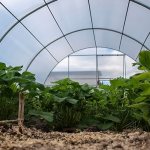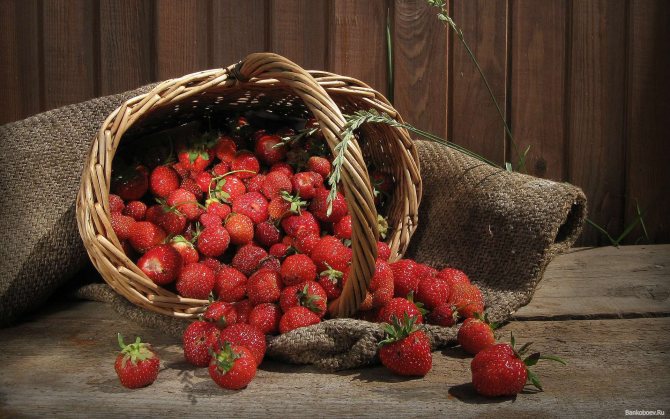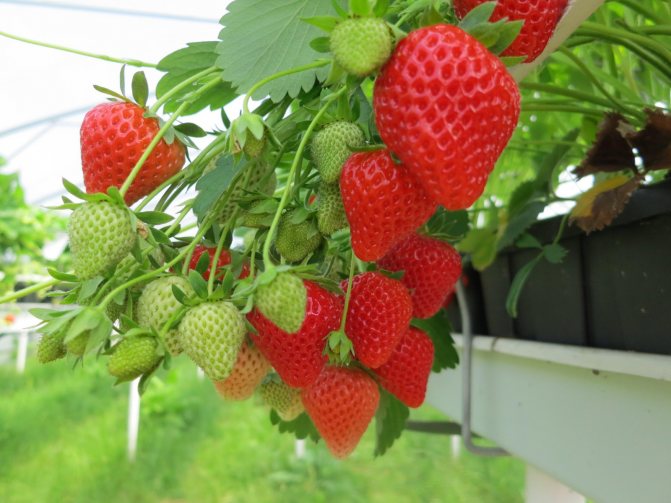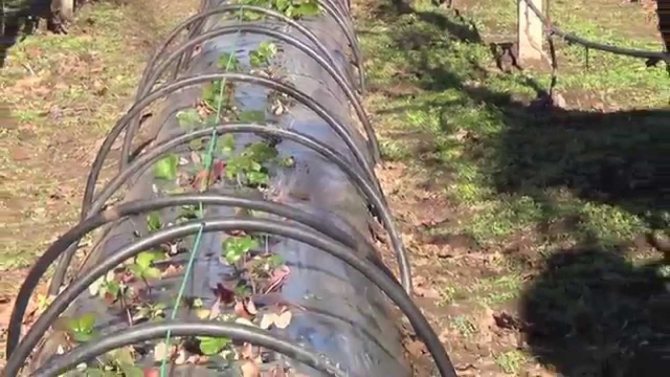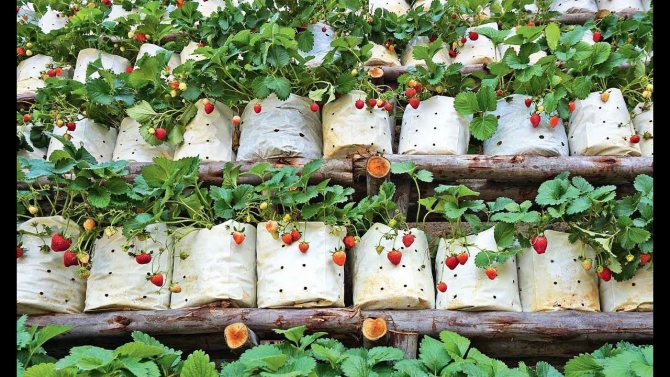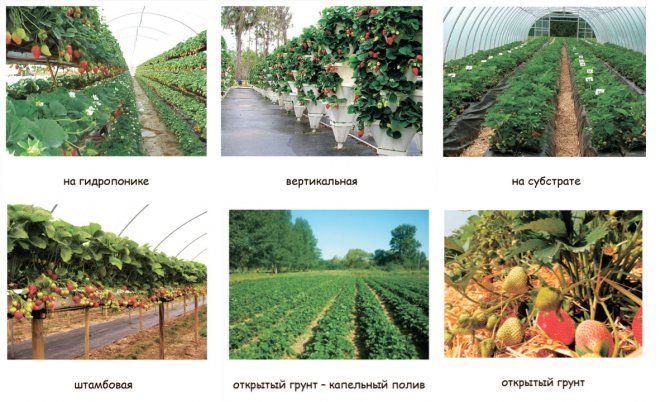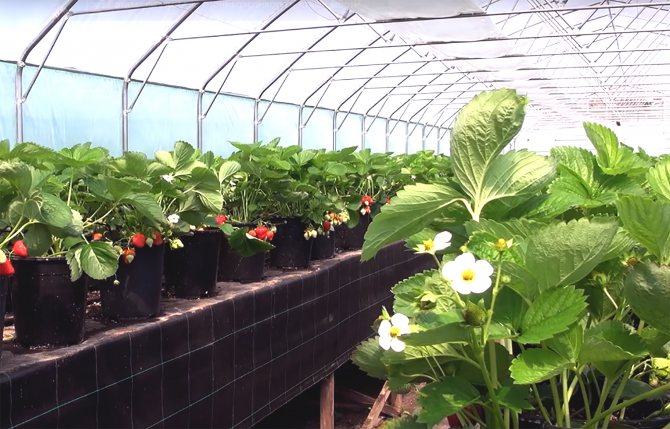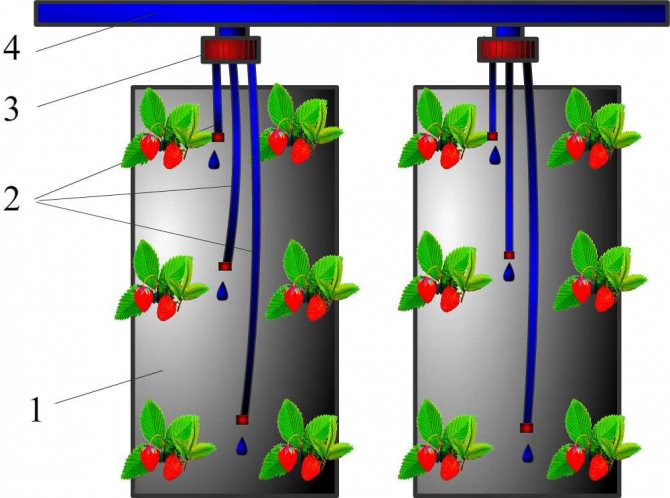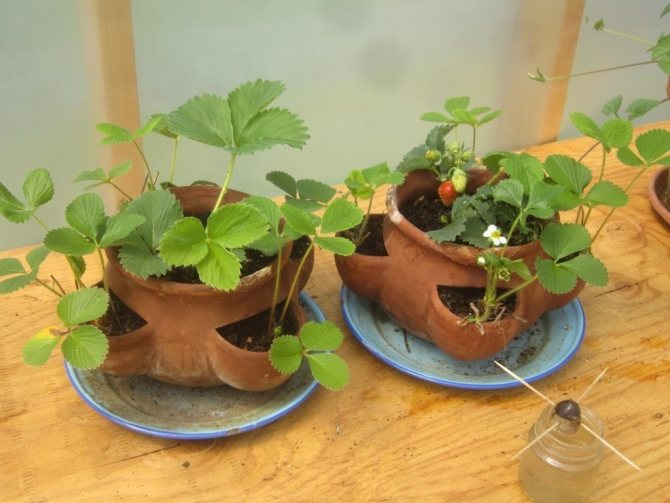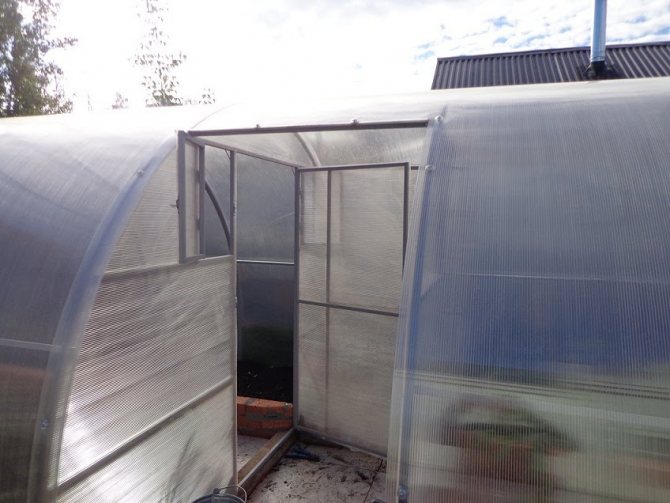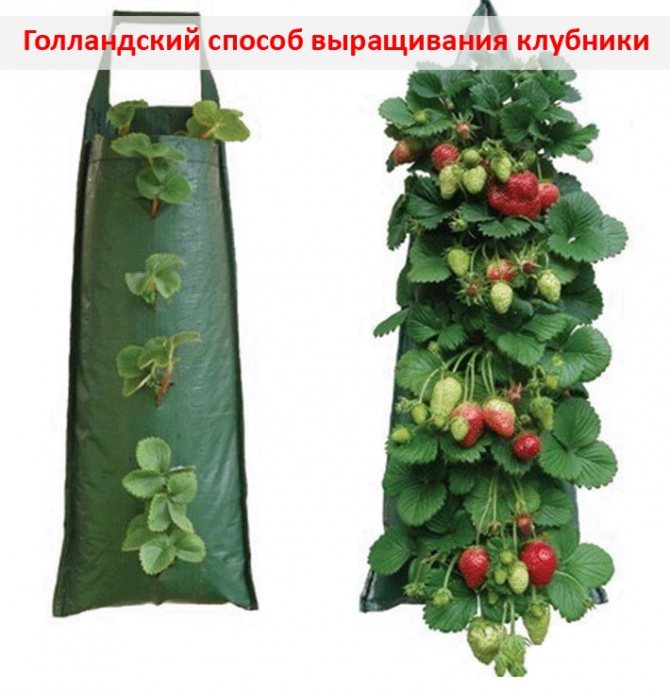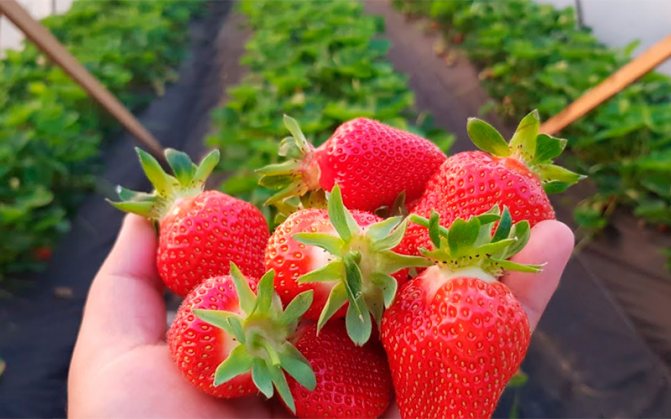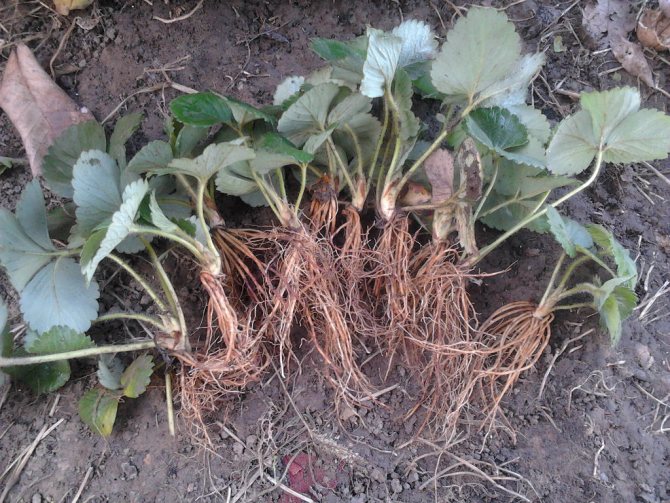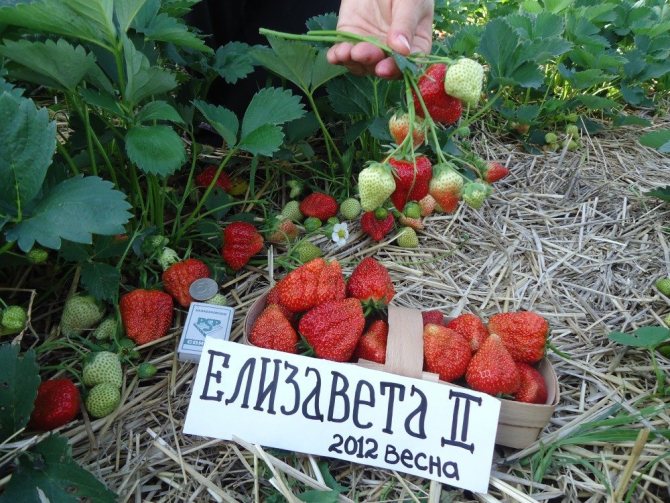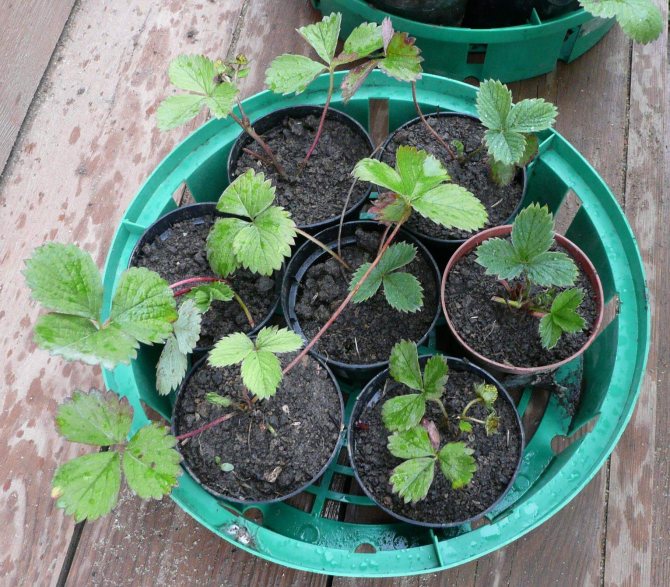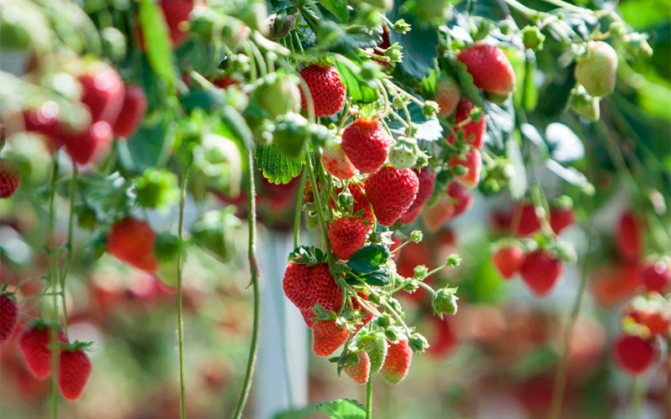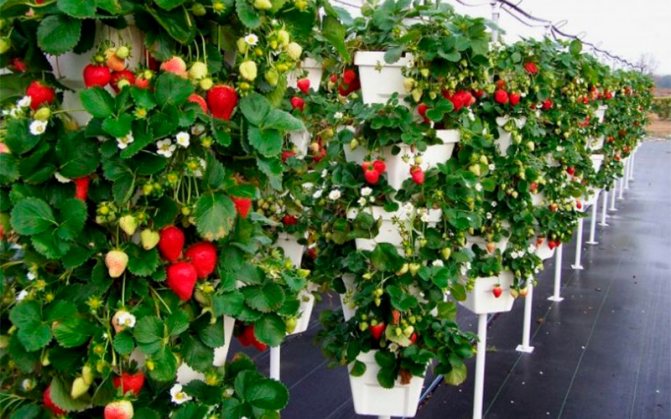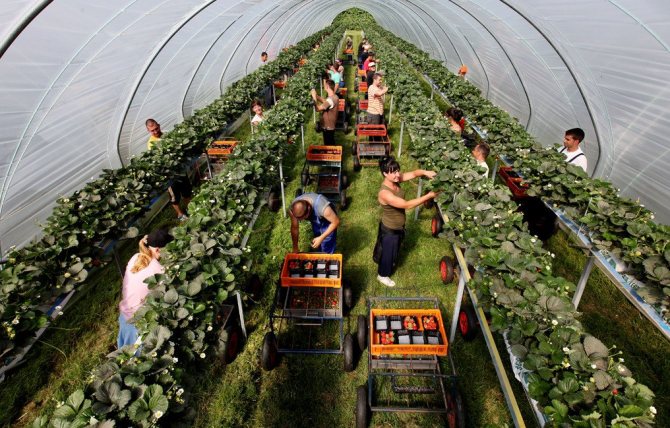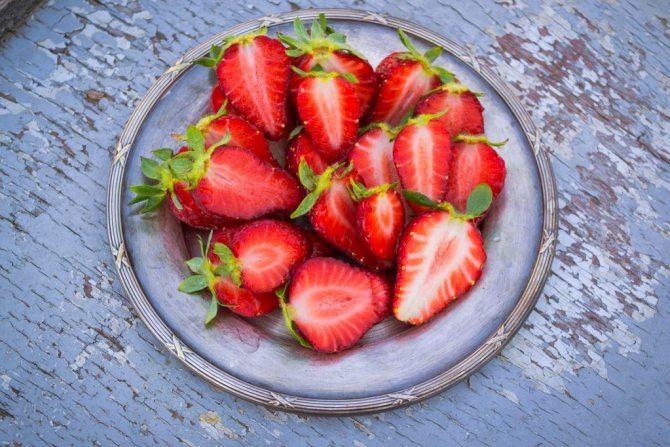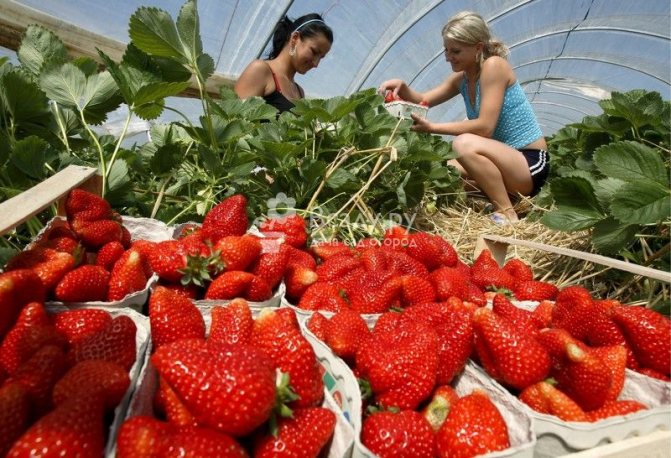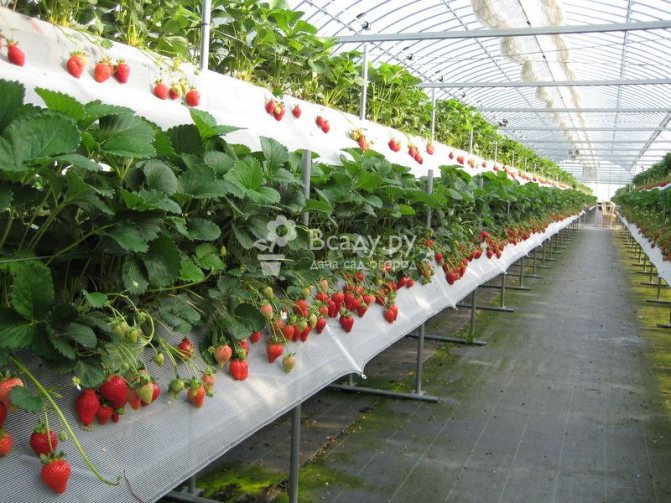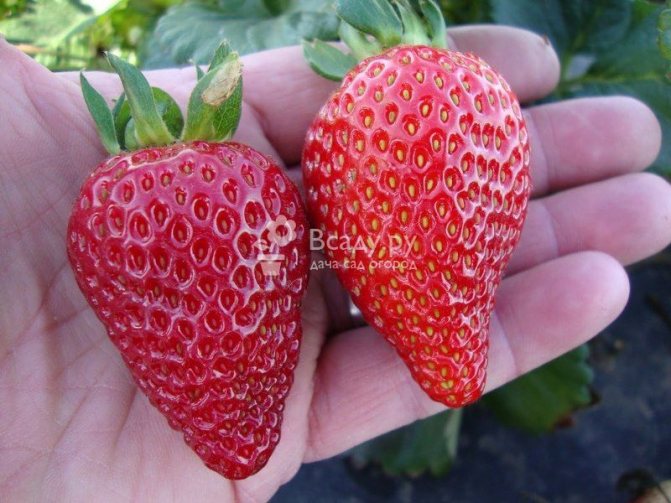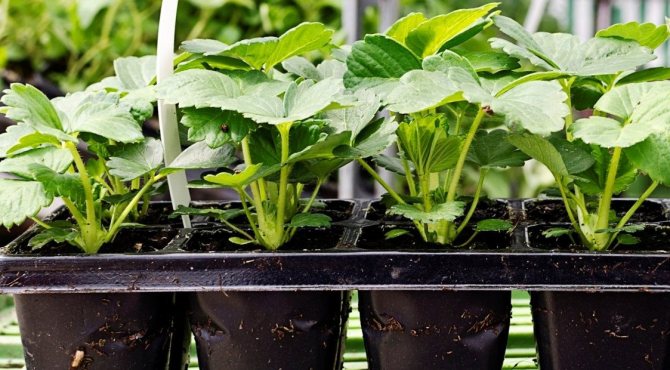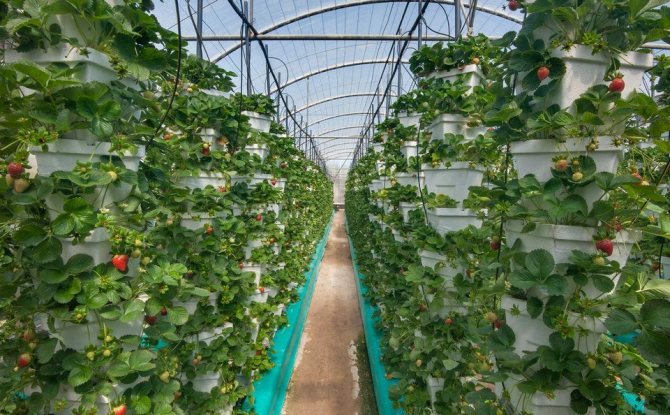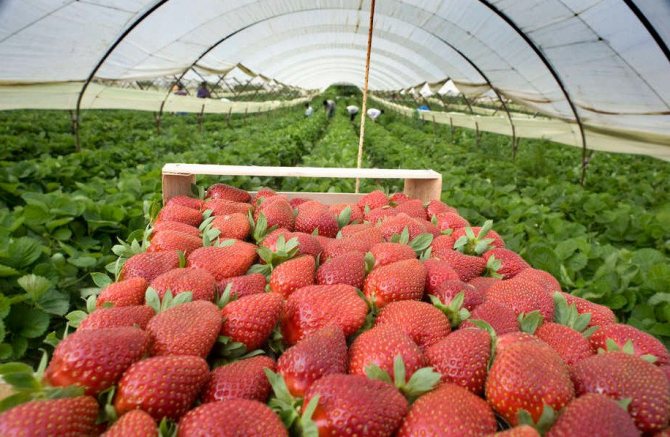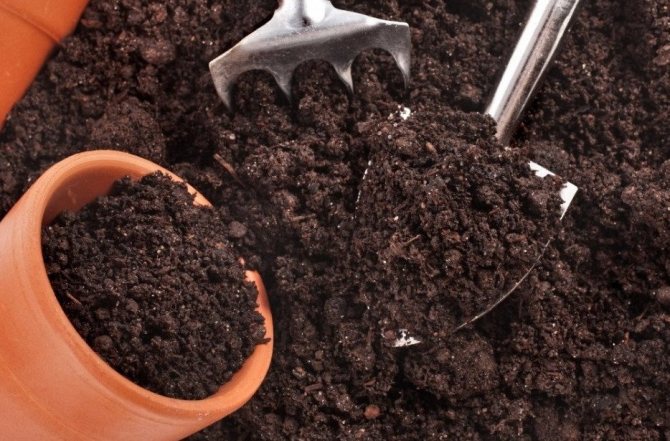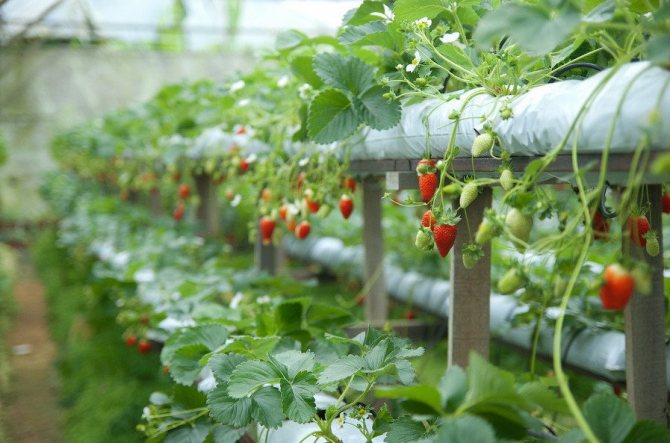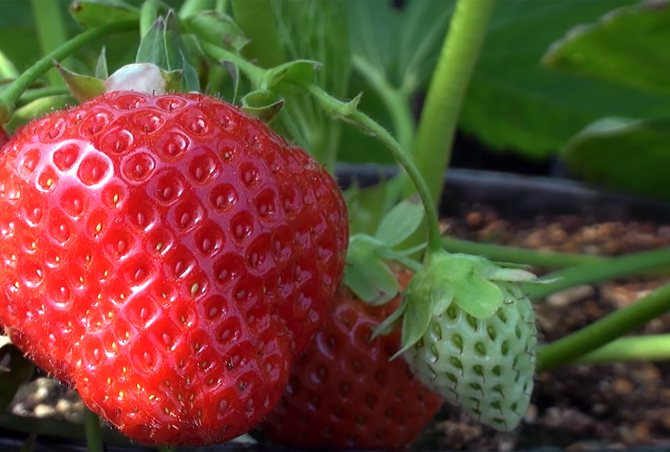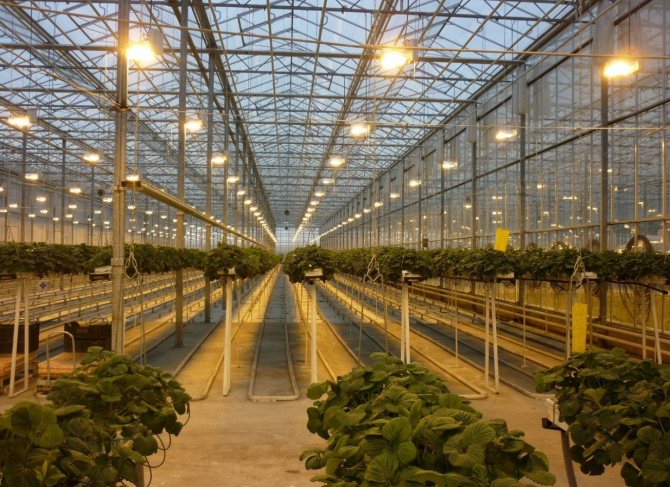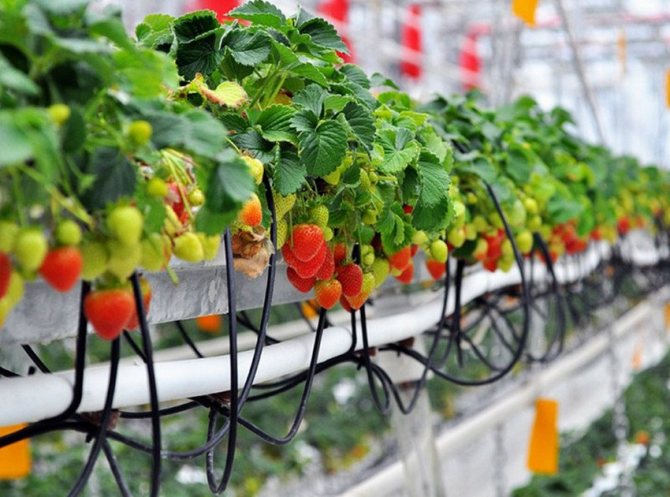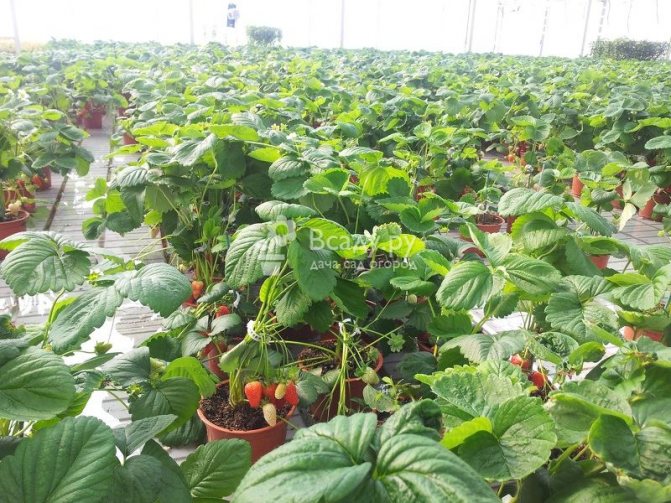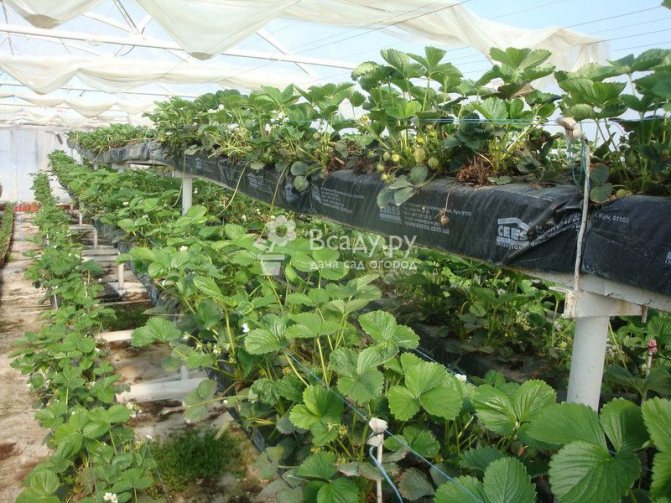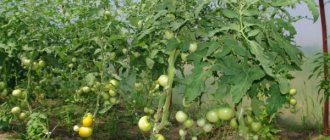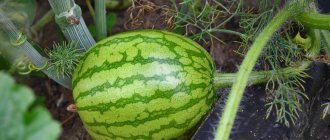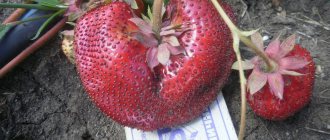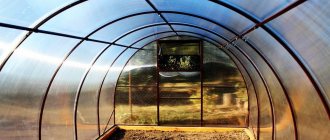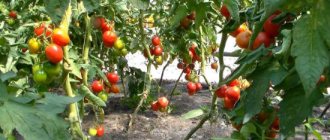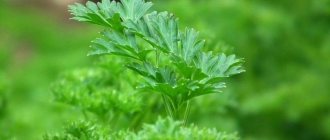Home / Garden / Berries
Back to
Published: 25.01.
Reading time: 6 minutes
0
16
Do you think that when growing strawberries in the middle lane, they get only one harvest per year and there is no alternative? Equip the greenhouse and organize the beds there. You will not depend on weather conditions and, if you follow the rules, you will be able to harvest several times. In this case, the berries will be of increased quality: sweet, dense (not watery) and large.
The principles of agricultural technology in greenhouse conditions are slightly different from growing in open ground, so they first get acquainted with all the nuances. Then the strawberries in the greenhouse will grow well and bear fruit fully.
- 1 What should be considered when constructing a greenhouse? 1.1 Choosing a material for a greenhouse
- 1.2 Required equipment
- 1.3 Irrigation system, heating, lighting
Advantages of a polycarbonate greenhouse
Glass and polyethylene are more traditional materials for creating greenhouses. Comparing with such greenhouses the construction of polycarbonate, we can highlight, perhaps, its main advantage - it is durability. If a polycarbonate greenhouse appeared at your summer cottage, you don't have to worry anymore, it will serve you for decades. In addition, the structure of such a greenhouse can be easily assembled by yourself, without seeking help from specialists. The cost of polycarbonate greenhouses is different, depending on the size of the greenhouse itself and the quality of the raw materials. Such a wide price range will allow any summer resident to choose for himself the option that will correspond to his financial capabilities. So, the main advantages of polycarbonate greenhouses include the following:
- they have maximum sunlight transmittance;
- such greenhouses are very resistant to mechanical damage;
- due to the plasticity of the material, the greenhouse can be given any shape;
- the service life of a polycarbonate greenhouse reaches 20 years;
- polycarbonate greenhouses are resistant to water and moisture.
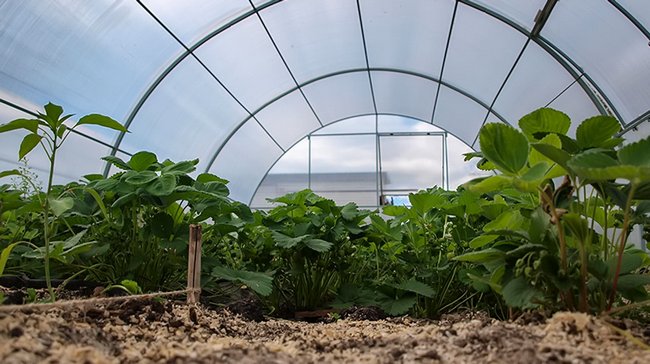
What should be considered when constructing a greenhouse?
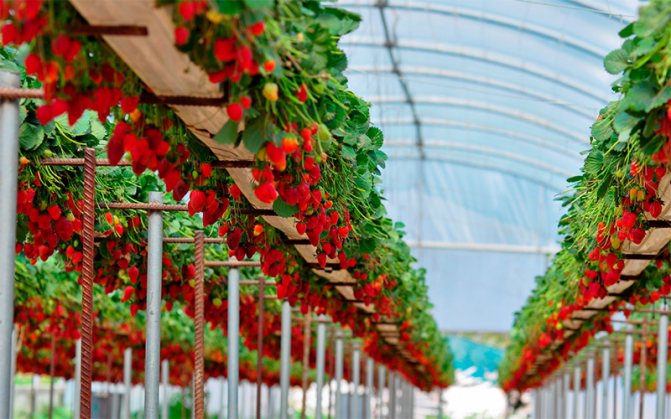

When working, they adhere to the following algorithm:
- It is necessary to choose a material for creating a greenhouse and design it.
- Create a microclimate with heaters and possibly humidifiers.
- Purchase garden tools, equip an irrigation system.
- Fill the greenhouse with soil suitable for garden strawberries.
- Buy drugs for treatment of diseases and pests, fertilizers.
- Select planting material.
At first glance, it seems that everything is very simple, but this is not at all true. When choosing equipment and materials for construction, many factors must be taken into account; you should also carefully consider the choice of a strawberry variety for planting.
Choosing a material for a greenhouse
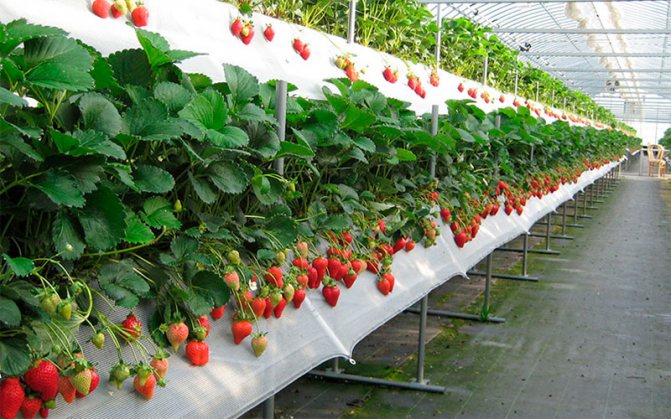

The main requirement for the materials used for the construction of greenhouses is increased insulating properties. They must be durable and adapted to the weather conditions in the region.
These factors are taken into account:
- the lowest temperature in the region in winter;
- wind strength;
- the amount of precipitation in centimeters.
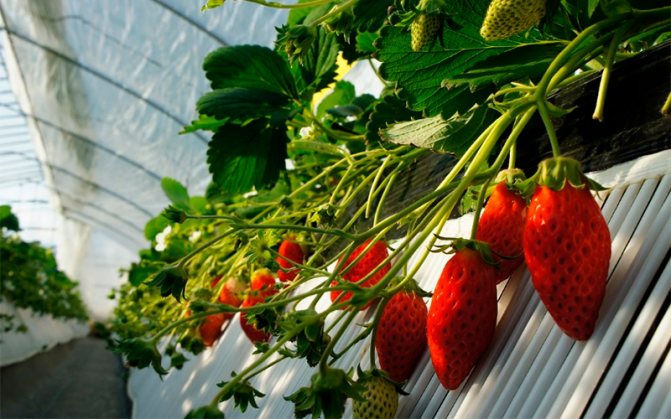

Three materials are used for artificial structures:
- The cheapest is film. The disadvantage is unreliability.Such a greenhouse will not fully work in winter, the film quickly collapses, breaks and becomes cloudy, so its service life is several years. Not suitable for northern regions, because it does not provide enough protection from the cold. Not applicable for year-round cultivation.
- Glass is an expensive option for a greenhouse, but in comparison with a film, such structures are considered quite reliable. They need a foundation, the glasses themselves are mounted in special frames. Keep in mind that you cannot save money and buy thin glass, because it will be very fragile, it can collapse with hail or break under the weight of snow. It is easy to maintain the microclimate, but you need to use a ventilation system, control the temperature and arrange heating.
- Polycarbonate is the golden mean. It is considered the best material for a greenhouse device. It is cheaper and stronger than glass, it can withstand serious loads if the frame is made of metal. Service life - over 15 years.
Attention! Each material has its own advantages and disadvantages. Remember that the greenhouse is being built with the prospect of service for decades. During this time, it should pay off completely.
Necessary equipment
The estimate compiled for the organization of a greenhouse for strawberries includes the cost of additional equipment.
You need to buy:
- drip irrigation system;
- energy saving lamps and lamps;
- electric or gas boilers;
- fans;
- thermometers;
- containers for planting crops;
- racks for organizing vertical cultivation.
Pay attention to one important factor - strawberries are very demanding on lighting. For flowering and full ripening of fruits, the length of daylight hours should be at least 8 hours, and the light should be bright, diffused. This is an additional power consumption, but it can be reduced by using special reflectors. They are not cheap, but they are a profitable investment.
Irrigation system, heating, lighting
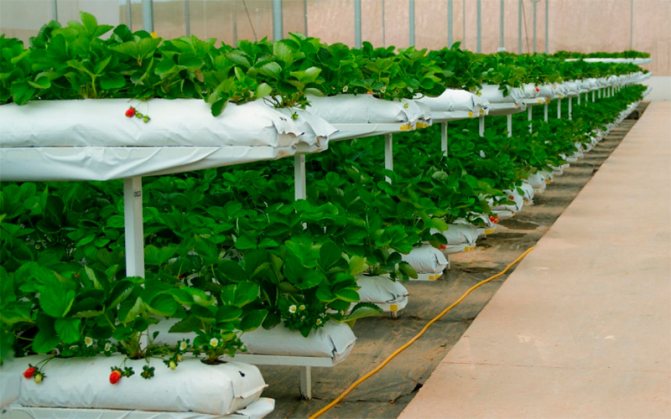

Growing will not be successful without controlling three basic parameters:
- temperature regime;
- air humidity;
- lighting.
To avoid sudden loss of crops, the greenhouse is equipped with a special heating system. Electrical designs are popular nowadays. When installing them, it is also worth considering one important factor - the presence of temperature sensors.
These are special mechanisms that start a kind of boiler that maintains the desired indicators inside the structure.
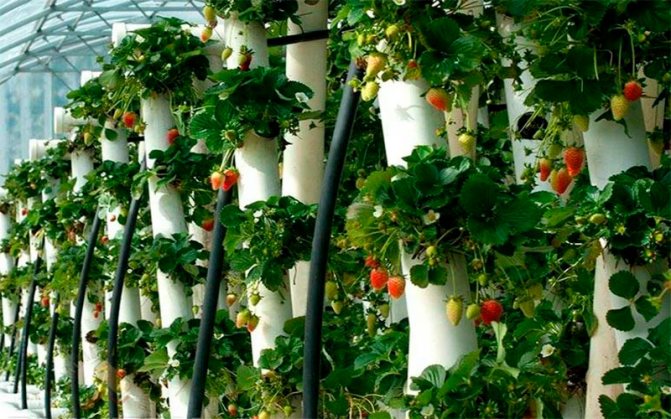

When installing additional heating, consider the method of growing the plants. If the strawberries are planted directly in the soil, high power will be required. Costs are minimized by growing vertically or by planting strawberries in pots or containers.
The required humidity of the air and soil is provided by the drip irrigation system. The parameter is controlled using a special device - a hygrograph. The indicator may not always be ideal, therefore it has to be adjusted. This can be done quite simply by airing and installing water tanks near the heating system.
As you know, strawberries are very demanding on light. And if in summer there are no problems with the length of the day, then in winter it will have to be lengthened artificially. Better to use new fluorescent lamps.
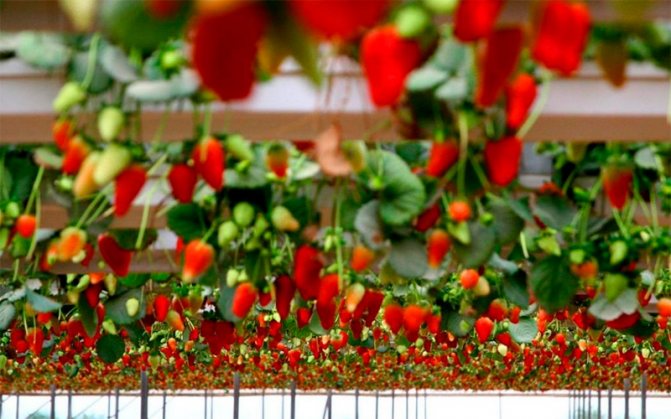

If the entire program is designed correctly, cultivation will take place automatically without burdensome participation for the owner. Naturally, the state of the plantings will have to be monitored, harvesting and selling or processing it.
Attention! What do you need to remember? Most varieties of garden strawberries are not self-pollinated; for indoor cultivation, it is better to choose new varieties of remontant strawberries.
Polycarbonate greenhouse strawberry varieties
For a greenhouse, it is better to choose more resistant varieties, which, firstly, are immune to diseases, and secondly, are not tied to the length of daylight hours.
In this case, the following varieties are chosen:
- Alba;
- Honey;
- Crown;
- Sonata;
- Darselent;
- Queen Elizabeth and others.
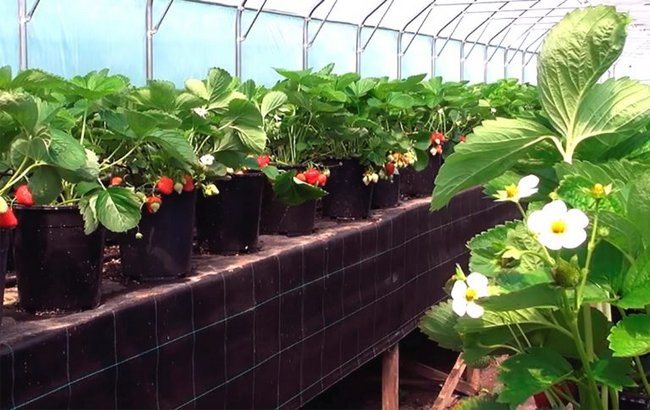

Famous varieties
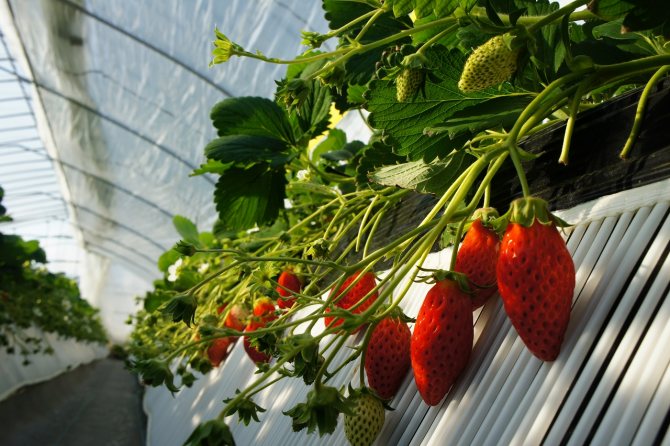

To get a stable income, you need the berries to be beautiful, tasty and liked by customers. Only remontant varieties that do not need artificial pollination should be grown in greenhouse conditions.
Businessmen should pay attention to self-pollinated plants that have large berries of the correct shape and a bright shade. The good scent also attracts consumers. The density of the product is also important, because it depends on how the transportation will be transferred, and the terms of its storage. Experts have compiled a list of known varieties, which included:
- Alba;
- Daryonka;
- Octave;
- Sonata;
- Rusanovskaya;
- Honey.
To maintain a constant flow of crops, different types of plants are planted in greenhouses (we are talking about early maturing, mid-maturing and late-maturing).
Methods for growing strawberries in a polycarbonate greenhouse
The most popular in our country is the method of five-year cultivation of remontant bushes in the beds. In the sixth year, the plants are harvested and seedlings are planted. This technology does not require large material investments in the purchase of seedlings and time spent on care, but it allows you to grow only three to four crops per year, in addition, over time, the bushes are depleted and give less and less berries. The most productive technology for growing strawberries in a greenhouse all year round was developed by the Dutch. It is based on planting pre-harvested bushes at a certain frequency and removing them after fruiting.
Business advantages and disadvantages
Growing strawberries in a greenhouse is well suited for your own business and has many advantages:
- Strawberries are a very popular berry, so it's easy to find distribution channels. You can sell the crop both for fresh sale and for processing;
- Quite low competition - the main peak of strawberry sales is the seasonal period, but the rest of the time the berries are in short supply and therefore the price for them increases several times;
- When growing fruits in a greenhouse, you can not be afraid that the amount of the crop will decrease due to unfavorable weather conditions;
- Using modern methods of growing berries in a greenhouse, you can grow the largest yield in the smallest area;
- The strawberry business pays off very quickly.
The minimum area required to start a business is just a few square meters
Also, this type of earnings have significant drawbacks that should be taken into account when building a business plan:
- The high cost of greenhouses and other equipment, because of which it will be necessary to prepare a solid start-up capital;
- Strawberries require constant care and favorable living conditions, that is, when growing them, you will have to carefully monitor the level of lighting, heating, soil moisture and other indicators. For novice gardeners, the main difficulty may be the need for artificial pollination;
- The high cost of heating and electricity.
The strawberry business is best suited for seasoned gardeners looking to capitalize on their hobby. The main difficulty of such your own business lies in the competent cultivation of berries, while making a profit from the sale of a high-quality crop will always be at a high level.
Before starting your own business, you need to calculate the start-up capital, recurring expenses and income received.
In the event that you do not have your own land plot, you will have to spend 1,250,000 rubles to open a business, while the costs are divided into the following components:
- purchase of a land plot - 500,000 rubles;
- construction and equipment of polycarbonate greenhouses - 550,000 rubles;
- the purchase of seedlings is made on the basis that 1200 plants are placed in one greenhouse - 3 greenhouses * 1200 seedlings * 50 rubles, the final sum will be 180,000 rubles;
- registration of a business and obtaining all necessary documents - 20,000 rubles.
If you have your own land plot with an area of 1 hectare, the start-up capital will significantly decrease to 750,000 rubles.
The profitability of the strawberry growing business is quite high
In addition to the costs described above, you should consider the annual costs:
- payment for electricity and heating - 20,000 rubles;
- payment for other utilities -5,000 rubles;
- fertilizers, processing, etc. - 10,000 rubles;
- other expenses - 10,000 rubles.
It is also worth considering the fact that every 2-3 years the strawberry plantings will have to be updated and if you do not prepare the seedlings yourself, you will have to re-purchase the seedlings.
The strawberry business can bring huge profits and pay off in 1-2 years. The main condition for the success of the business will be the production of quality products, namely tasty and attractive berries.
The business of growing strawberries in a greenhouse has many advantages, making it particularly attractive to beginners.
- Strawberries are very popular. It is eagerly bought by both end consumers and shops and catering establishments.
- Competition is low, strawberries are present in sufficient quantities on the market for no more than 3 months a year.
- Imported berries are significantly inferior in taste and aroma to domestic varieties grown in soil.
- In the winter-spring period, the markups for strawberries increase significantly.
Among the shortcomings of the business are:
- costs for the construction and equipment of greenhouses;
- high cost of electricity for heating;
- the need to register a legal entity to work with stores;
- in the summer season, the product margin goes down.
Planting strawberries in a polycarbonate greenhouse
When using classical technology, the entire greenhouse area is divided into meter strips. Household paths are made between them. The plots are covered with layers: a five-centimeter layer of expanded clay crumbs or fine gravel, 10 cm of sand, 8 cm of high-quality chernozem. Then mineral fertilizers are applied, for example urea Sulfoammophos.
Strawberries are planted in a checkerboard pattern or in rows. Pits for planting in the ground are made at a distance of 25 cm with a depth of 10 cm. To protect the plants from weeds and maintain the optimal amount of moisture, strawberries are mulched using agrofibre. To do this, the fiber is cut to the size of the strips and placed on the prepared soil. The edges are pressed, and markings are applied, holes are made along it according to the landing pattern.
Strawberry bushes are planted in the holes. Care must be taken during cultivation so that moisture does not accumulate in the ground. The first months must be applied with mineral fertilizers. Watering is carried out according to the scheme: for 30 days it is watered daily, then once a week.
Additional lighting for growing strawberries in a polycarbonate greenhouse
Lighting is very important for the growth and development of strawberries. It is necessary that in a greenhouse where strawberries are grown all year round, a 10-14 hour daylight hours are observed. To achieve this, you need to turn on additional lighting sources between 8 am and 11 pm and from 5 to 8 pm.
This is especially important during the periods of flowering, flowering and fruiting. Fluorescent lamps should be used as additional sources of illumination.If you have chosen a variety of neutral daylight hours for planting, then subject to the above conditions, the plant will be fully provided with the required amount of light. Increasing daylight hours allows for faster flowering and faster fruiting. For example, with an eight-hour daylight hours, the plant will bloom two weeks after planting, and will give ovaries after 1.5 months. At 16 hours - flowers will appear after 10 days, and fruit ovaries - after 35-37 days.
Watering and feeding strawberries
The plant requires regular watering with warm water during all growth phases. The average liquid consumption in this case is about 20-25 l / m2 of the greenhouse. The soil must be moistened to a depth of at least 25 cm.
The best solution would be to organize a drip irrigation system. It will require additional costs, but will reduce water consumption, free up time and improve the quality of irrigation, delivering liquid to the root zone of the bushes.
IMPORTANT: To preserve moisture, the free areas of the beds are covered with a black film. In addition, the film prevents the berries from contacting the ground, so they stay clean.
The strawberries are fed every 14 days after deep watering.Use one of three types of dressings:
- 10 g of potassium salt and 80 g of nitrate per bucket of water;
- 17 g of potassium salt, 20 g of superphosphate, 10 g of nitrate per bucket of water;
- Poultry droppings diluted with water at a concentration of 1:15.
After the formation of the ovary, feeding is stopped.
Strawberry care in a polycarbonate greenhouse
When planting seedlings, the temperature should be at least 12 degrees. As the plants grow, the temperature rises to 20 degrees. During flowering and ovary, stop at 24 degrees. Lower temperatures will worsen fruiting.
During planting, air humidity should be at least 80%, during flowering it drops to 70%.
Watering should be regular. Water should not touch foliage, flowers and berries. The best option for water supply is drip irrigation.
Speaking about the feeding of the flower beds, it is worth saying that in warm conditions of cultivation, they should be regular with periodicity in two weeks.
For 10 liters of warm water, 10 grams of potassium salt, 80 grams of ammonium nitrate are taken.
Top dressing should be combined with watering plants, this will increase the absorption of nutrients.
Classic varieties are pollinated with an artistic brush. Pollen is transferred from flower to flower, from plant to plant.
Self-pollinated varieties make it easier to care for, but experienced gardeners advise you to still use a brush for pollination. In large greenhouses, hives with bees or bumblebees are organized. Insects conduct pollination naturally.
Appropriate temperature and humidity
The materials from which the greenhouse is made must have low thermal conductivity, which allows maintaining the desired temperature regime. Cellular polycarbonate is the best choice. The greenhouse itself must contain vents or vents.
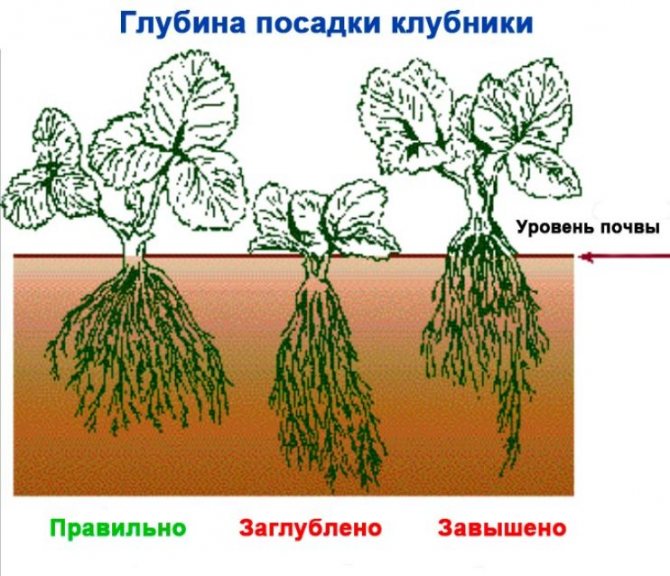

Throughout the growing season, the air temperature should not rise more than 25 * C and drop less than 20 * C. Recommended humidity level:
- When planting seedlings - 80-85%;
- During active growth - 75%;
- With the beginning of flowering - 70%.
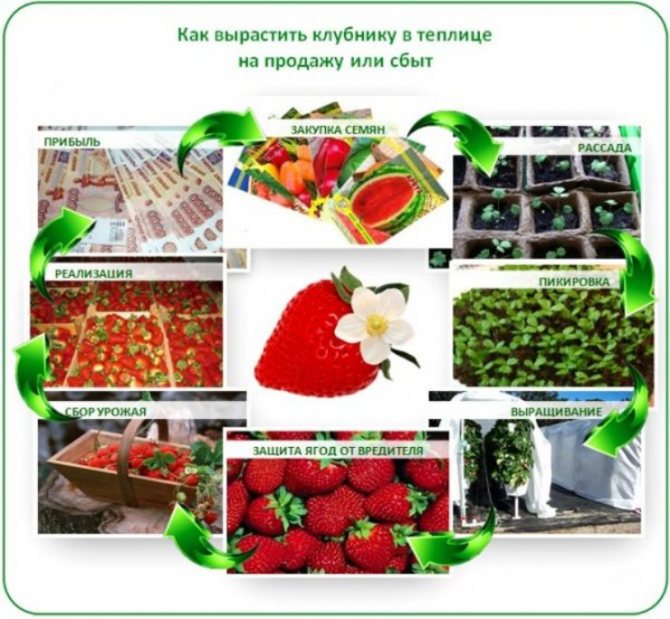

Diseases and pests of strawberries grown in a polycarbonate greenhouse
Diseases and pests can affect strawberries in the greenhouse if not properly cared for. The main diseases develop due to excessive watering and high humidity. Strawberry bushes can be affected by:
- brown spot;
- powdery mildew;
- white rot.
The prevention of the development of diseases is the regular ventilation of the greenhouse and preventive treatments with special preparations.
If the plant is affected by late blight - rotting of the roots, then the diseased bushes must be removed.
When to plant seedlings?
It is possible to transfer seedlings to the greenhouse when the average daily air temperature in it reaches 15 * C. In the middle lane, this period usually occurs in late March - early April. If the greenhouse is equipped with a heating system, then planting can be carried out at any convenient time.
IMPORTANT: Strawberries are sensitive to soil changes, so each plant is transplanted with a large clod of soil. Ideal in this regard is the Dutch system, in which plants are transported in mobile pots.
To save space with traditional planting, it is recommended to combine strawberries with beans, radishes, spinach.
Greenhouse equipment rules
Even at the stage of greenhouse construction, it is important to think over the heating system. The most convenient option is to combine biofuels with artificial heating. An infrared cable or pipes are laid underground, through which warm air is chased. For heating, you can use an electric boiler or a fire, as well as stove stoves.
Prepare biofuels by mixing horse, pig, or goat manure with straw, spilling the mixture with water, covering with plastic, and letting it sit for a few days. Rotted manure is laid out under the topsoil. This mixture maintains the greenhouse temperature up to 25ºC.
A very important point is soil preparation. Strawberries need a light mixture of equal parts of turf and humus with the addition of ash and mineral fertilizers.
To optimize acidity, a mixture of superphosphate and potassium chloride is suitable. The soil must be thoroughly loosened.
For suspended technologies, you can use a peat-perlite mixture, which must be steamed. The prepared substrate is poured into plastic sleeves and placed on racks installed along the walls of the greenhouse. The nutrient mixture retains moisture well and accelerates the development of strawberry bushes. The Dutch system increases the yield of strawberries, allowing 8 kg of berries to be removed from one sleeve.
Sales of manufactured products
After the strawberries are harvested, you need to sell them. It is worth noting that even the most mature strawberry varieties do not have a long shelf life, so it is best to think over the distribution channels in advance and conclude a supply agreement at the same time.
Freshly harvested strawberries in crates
There are several common ways to sell products:
- sale of berries to shops, supermarkets and other retail outlets;
- also strawberries can be sold to various processing plants, restaurants, etc .;
- the goods can be sold through their own retail outlets.
Selling fresh and tasty strawberries is easy enough because they are in high demand both in summer and winter.
Which greenhouse is right for you?
A metal frame greenhouse lined with polycarbonate sheets is ideal for growing strawberries. It is better for farmers to build medium sized greenhouses (100 - 120 sq. M). Polycarbonate can be replaced with a double layer of polyethylene film, but this coating will have to be renewed after 1-2 years.
Large greenhouses are more likely to use steel-framed greenhouses covered with glass. The pitched roof structure provides good natural light and does not allow snow to linger. Glass retains heat well, but it costs significantly more than film and polycarbonate.
Strawberries are grown in industrial conditions in a rack method, or use Dutch suspended technology. Industrial greenhouses for strawberries with this arrangement saves space and makes harvesting easier. Planting strawberry bushes directly into the ground is also possible.
Hydroponic technologies reduce the cost of the process, but significantly impair the taste of berries. They acquire a characteristic watery taste and lose their aroma. A greenhouse with a blank wall lined with cinder blocks will help save on heating. Usually the northern wall is deaf.
The blocks reliably protect the greenhouse from cold winds, and they can also provide additional heating on the principle of a solar battery. The greenhouse should be equipped with a ventilation and drip irrigation system, good lighting.
Sample business plan
Strawberries are popular all year round, both in summer and winter, so this business will never have problems with customers.
The production plan includes all data related to the cultivation of strawberries (preparation of the greenhouse and seedlings, planting, care, berry picking, etc.) and plans for the sale of the resulting crop.
A business built on year-round cultivation of strawberries pays off very quickly and can bring a good income. Before starting your own business, you need to calculate everything to the smallest detail in order to avoid failure at the initial stages.

